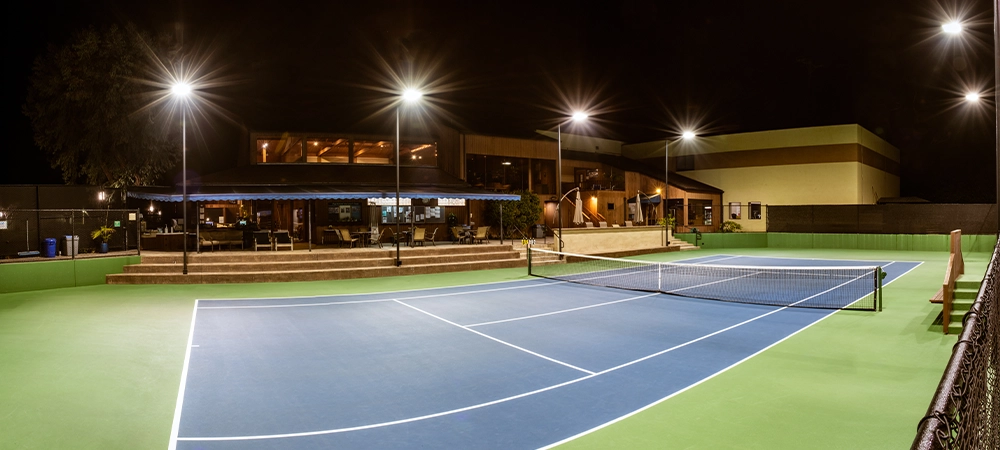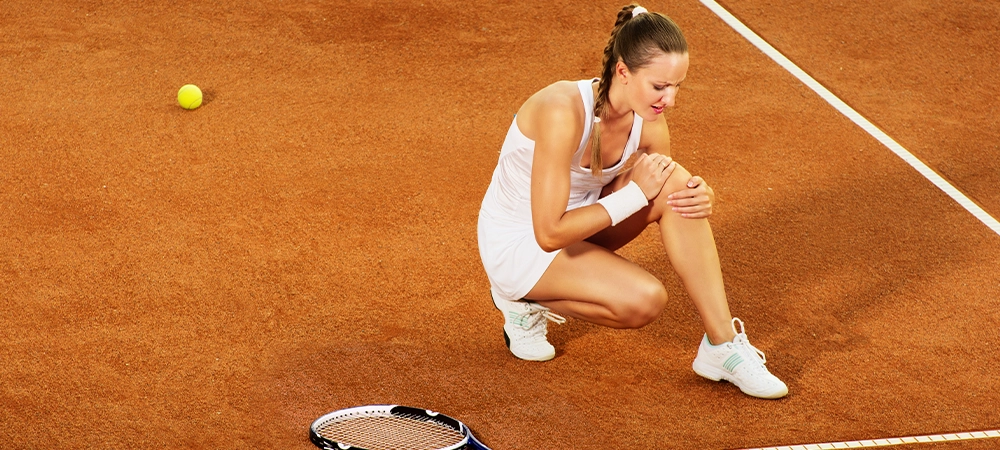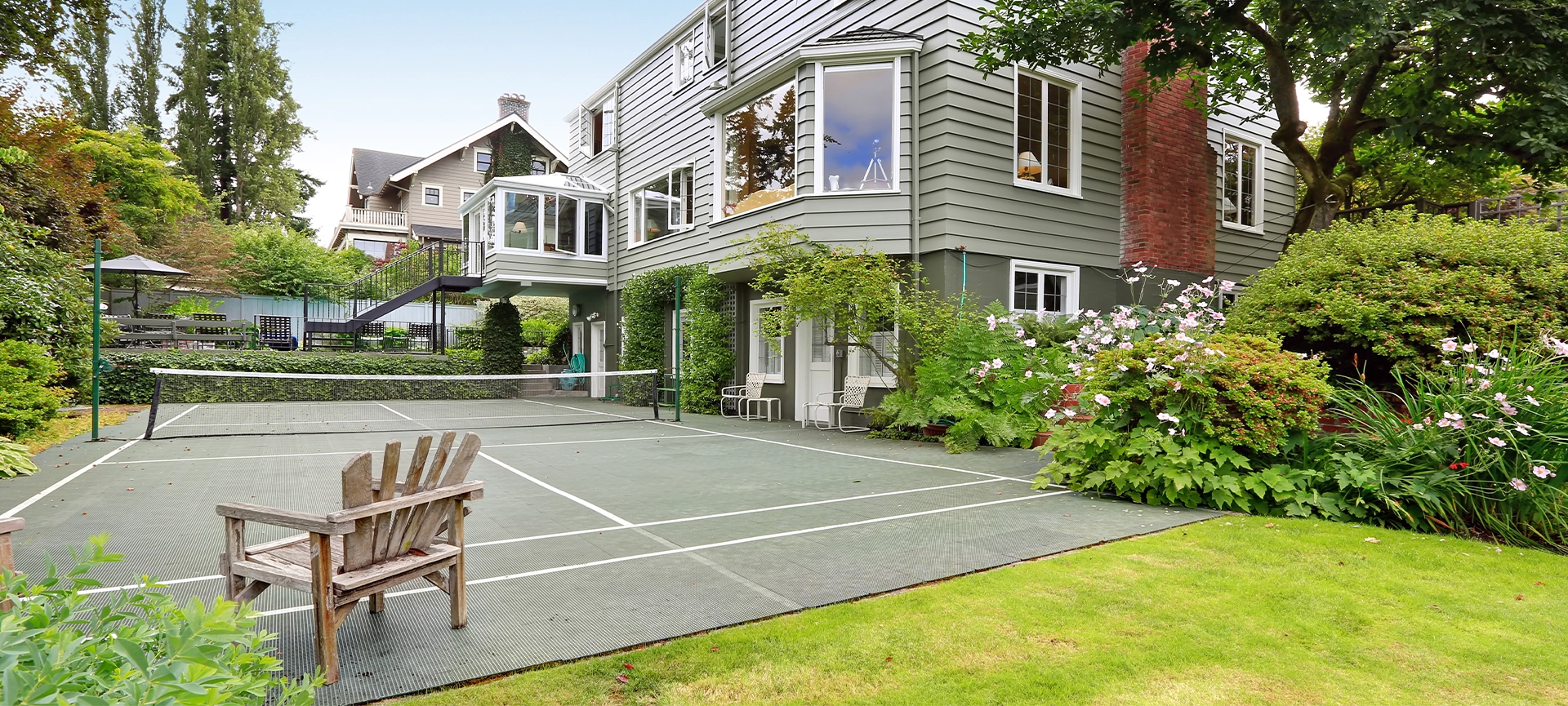Navigating Zoning Laws and Regulations for Residential Tennis Court Installation
Installing a tennis court on your property can transform your backyard into a personal sports oasis, providing endless hours of fun, exercise, and relaxation. However, before embarking on this exciting home improvement journey, it’s crucial to understand zoning laws and regulations that govern residential tennis court installations.
These legal frameworks are designed to ensure safety and maintain community standards, but they can vary significantly from one jurisdiction to another. Before installing a tennis court in your home, you must obtain permits to ensure your project complies with zoning laws and building codes.
Typically, you must apply for a permit, which the local zoning board approves before proceeding with your tennis court installation. Getting a tennis court contractor knowledgeable in this aspect is always a good idea to save you time and stress.
This comprehensive guide will help you understand the common legal considerations for installing a new tennis court in your residence.
Common Zoning Laws for Tennis Court Installation
Zoning laws are local regulations that dictate how you can use a property. Municipalities establish them and can vary widely depending on your location.
Before planning your tennis court, it’s essential to check with your local zoning board or municipal planning department to understand the specific laws applicable to your area. Common zoning considerations for residential tennis courts include:
Setbacks and Buffer Zones
Setbacks refer to the minimum distance your tennis court must be from property lines, roads, and other structures. These are set to ensure privacy, reduce noise impact, and maintain aesthetic standards within the community. Similarly, you may require buffer zones for visual screening or landscaping between your court and adjacent properties.
Size and Height Restrictions
Zoning laws may also dictate the maximum size and height of structures on your property, including fencing or lighting poles associated with your tennis court. Ensuring that your court design complies with these limitations is essential to avoid costly modifications later.
Lighting and Noise Considerations
Lighting is crucial if you plan to use your tennis court during evening hours. However, zoning laws may restrict light type, height, and intensity to minimize disturbances to neighbouring properties. Similarly, noise ordinances may affect your ability to use the court during certain hours, especially in densely populated areas.
Related Article: Enhancing The Game: Choosing The Right Colour Scheme For Tennis Courts In Guelph

Navigating Zoning Laws and Regulations for Tennis Court Installation
Virtually all municipalities require a permit for a residential tennis court installation. The permitting process allows the local government to review your project plans and ensure they comply with zoning laws and building codes.
Here’s what you can expect:
Submitting Your Application
You’ll likely need to submit detailed plans of your proposed tennis court, including dimensions, materials, lighting design, and landscaping plans. Be prepared to pay a fee for your permit application, which can vary based on your project’s scope and your municipality’s pricing structure.
Review and Approval Process
Once submitted, the local zoning board, planning department, or both review your application. This process can take several weeks or even months, depending on the complexity of your project and the efficiency of your local government offices.
They may also ask you to modify your plans to meet specific requirements or to attend a hearing where neighbours can voice concerns or support your project.
Inspections
After receiving approval, your project will likely be subject to inspections at various stages to ensure compliance with the approved plans and building codes. Final approval and issuing a certificate of occupancy (or equivalent) will signify that your tennis court meets all legal requirements and is safe for use.
In addition to zoning laws and permits, other legal considerations may affect your tennis court project:
Homeowners Association (HOA) Rules
If you live in a community governed by an HOA, you’ll need to check the association’s rules regarding tennis court construction. HOAs may have their own approval processes, aesthetic guidelines, and use restrictions.
Easements and Rights-of-Way
Be aware of any easements or rights-of-way on your property that can impact where you can locate your tennis court. Easements may grant utility companies or neighbours certain usage rights on parts of your property, limiting your ability to build in those areas.
Liability Insurance
Consider increasing your homeowner’s liability insurance to cover potential accidents or injuries on your tennis court. This added protection can provide peace of mind and financial security.
Related Article: Maintenance Must-Dos: Seasonal Tennis Court Upkeep For Optimal Performance

Tennis Court Contractor in Ontario
Installing a residential tennis court is an exciting project that can enhance your property and lifestyle. However, it is critical to navigate zoning laws, obtain necessary permits, and adhere to legal requirements.
At Crowall Surface Contractors, we execute your tennis court project smoothly and legally, helping you acquire the necessary permits to construct the tennis court of your dreams. We also install other sports surfaces, such as basketball and golf courts.
Reach out to us today at 1-416-951-4626 to get a free quote.



